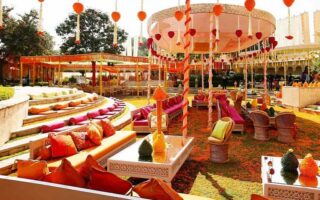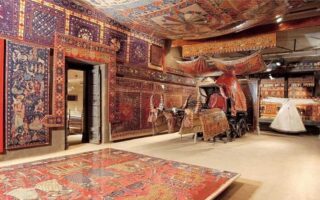Explore the places where the Buddha set foot and learn what makes them a captivating destination for millions of visitors every year. “Buddhist Pilgrimages, like those of Christianity and Islam, are spiritually motivated journeys to holy places,” says Tim Ward, author of four books about his travels in Buddhist lands, including What the Buddha Never Taught and the upcoming Savage Breast: One Man’s Search for the Goddess. “By coming into proximity with these sites, the pilgrim is spiritually blessed. In Buddhism, this blessing is called “making merit” — accumulating good karma that helps one attain enlightenment.” Pilgrimage means different things to every believer. “In Tibet and other Mahayana schools, they pilgrims sometimes offer up the merit obtained on pilgrimage for the enlightenment of all sentient beings,” adds Ward. “Thus a pilgrimage is not undertaken for one’s own sake, but as an act of universal compassion.”
For Buddhists, the main pilgrimage places are connected to the life of the Buddha.
An Introduction
The term Buddha comes from the ancient Indian word meaning “one who has awakened,” and it applies to anybody who has achieved enlightenment. Siddhartha Gautama, the historical Buddha we all know today, was one in the spiritual lineage of Buddhas, not the first and certainly not the last one. Siddhartha never claimed divine status for himself and he only set up to teach the Dharma (doctrine, truth) after much doubt and concern that the principles would not be understood.
Today, the four major pilgrimage places of Buddhism in the world are related to the life of Siddhartha Gautama.
Lumbini: The Birth
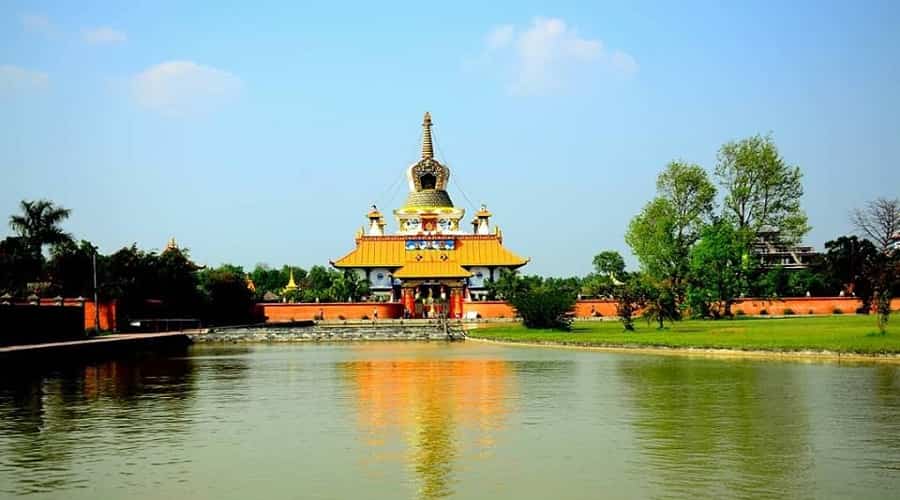
Lumbini is situated in the Terai plains of modern Nepal, and is considered the birth site of the Buddha (around 623 BC). “The Buddhist King Ashoka visited it in the 3rd Century BC and erected a pillar declaring it a sacred site,” says Ward. “The pillar inscription declared that the king, in honor of the Buddha, granted Lumbini a tax cut! The pillar has been re-erected in modern times.” Now known as the Ashoka Pillar, the unpretentious structure marks the spot where Buddha was born.
Pushkarini, the sacred pool where Maya Devi took a bath before giving birth to the Buddha, is situated nearby.
As with many other places, Lumbini remained abandoned and neglected for centuries, until rediscovered by accident at the end of the 19th century. Later excavations revealed the ruins of a temple, a pagoda-like structure erected over the foundations of previous Stupas. Inside, a bas-relief image of Maya Devi depicts the nativity.
Bodhgaya: The Enlightenment
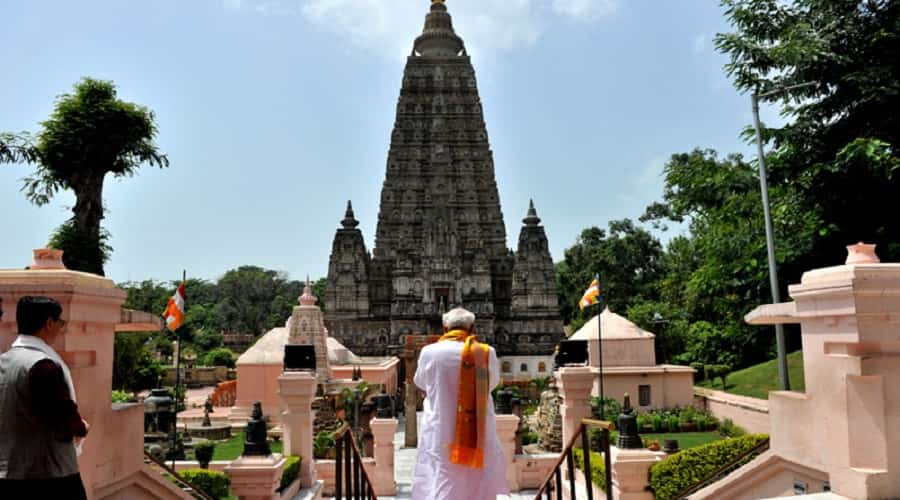
Bodhgaya is the place where the Buddha attained enlightenment (Nirvana) some 2,500 years ago. Located in the state of Bihar in India, it’s home to the Mahabodhi Temple and the holy Bodhi tree. “This is the Mecca, the Jerusalem, of Buddhist pilgrimages,” says Ward. “It’s the place of Buddha’s enlightenment –most important event in the life of the Buddha, and for Buddhists, the most important event of all time,” adds Ward, who recounts his own Bodhgaya experience in the book arousing the Goddess: Sex and Love in the Buddhist Ruins of India.
Legend goes that the Mahabodhi Temple was built by Emperor Ashoka more than 250 years after the Buddha was there. Abandoned and forgotten for years, it was eventually restored in the late 19th century by Sir Alexander Cunningham, as part of his work for the British Archaeological Society.
The temple itself is a 150-foot-high pyramidal tower made of bricks and surrounded by four smaller towers that mimic the central one. Inside the temple, an eighteen-foot golden Buddha sits in meditation.
A marble walkway surrounds the pyramid. While the walk offers incredible views of the carvings on the temple’s walls, the walkway’s primary purpose is circumambulation. “Circumambulation is the Tibetan Buddhist ritual of walking around a monastery, stupa or other sacred site,” says Ward. “The rite is usually performed while chanting a mantra (usually Om Mani Padme Hum, the prayer for universal peace and enlightenment). Many Tibetan sacred sites are lined with hundreds of prayer wheels on the outer walls, so that as the pilgrims circumambulate, they give each one a spin in turn. The wheels are cylinders packed with prayer scrolls, and turning the wheel is the equivalent of praying all the mantras inside of it. For Tibetan Buddhists, spinning or walking around something sacred is a kind of spiritual dynamo –just as a spinning an electric dynamo generates electric energy, so circling a sacred site generates spiritual energy– energy that brings peace and enlightenment to all beings.”
One of the world’s oldest religions started at the feet of the Bodhi Tree (literally, enlightenment tree), at the rear of the temple. Prince Siddhartha Gautama sat in the shade of the original Peepal tree and attained Nirvana after three days and three nights of deep meditation. Although the original tree is long gone, the one standing in its place today it’s a direct offspring. Among visitors, it’s common practice to tie scarves to the Bodhi Tree while burning incense around it.
“At the front entrance of the temple, Tibetan pilgrims chant prayers and perform various rituals all day long (typically the 100,000 Grand Prostrations),” says Ward. “In the surrounding area there are monasteries from virtually every Buddhist sect on earth –an incredible global village of Buddhist traditions.”
Sarnath: The First Discourses
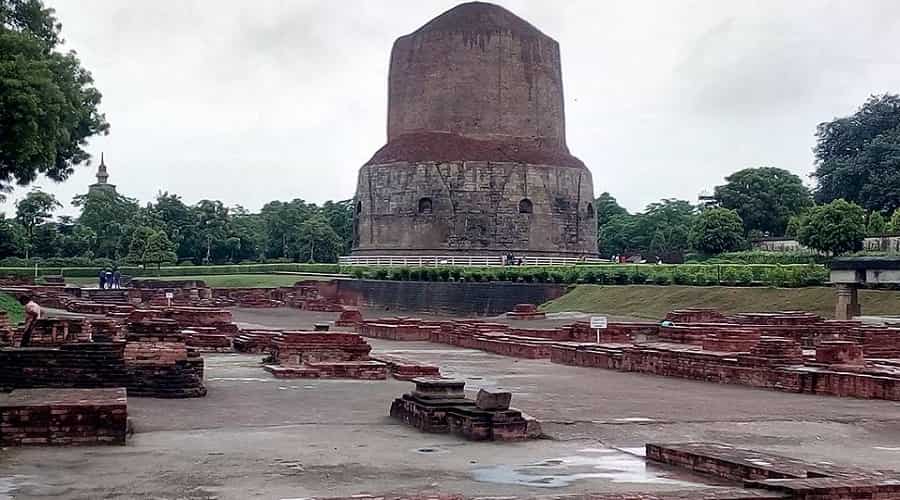
Little remains of the original structures that once stood at Sarnath (formerly also known as Mrigadava, Rishipattana, and Isipatana). The Muslim invasion of 1194 AD left everything either heavily damaged or completely destroyed. The Dhamek Stupa, however, stands proud among the ruins. The 128-foot structure was originally built by Emperor Ashoka, and later rebuilt and remodeled during the following four centuries. “This is where the Buddha delivered his first sermon to his five original disciples –or as the Buddhists say, he ‘first turned the wheel of dharma’ (the teachings),” says Ward. Here, the first Sangha (monkhood) was born. “Here is where Buddhism ceased to be the possession of one enlightened man, and first made the jump to others,” adds Ward. “Buddha, Socrates, Jesus, Mohammed, they all had tremendous faith in the power of the word to change people, to liberate them. That it was possible to speak the truth, and transform another human being by that truth struck me so vividly at Sarnath.”
The Mulagandha Kuti (main temple) ruins and the remains of the Ashoka pillar are the other two main allures of Sarnath. While the original pillar was believed to be 49-foot high, only the base remains today, in which an inscription reads: “Let no one cause a division in the Sangha.”
The ruins cover an extensive area and are dispersed among well-maintained gardens that lead to the Deer Park, where the Buddha first taught the Dharma. Several modern temples are nearby, of which the Mulagandhakuti Vihara stands out because of its impressive wall paintings.
Kushinagar: The Passing
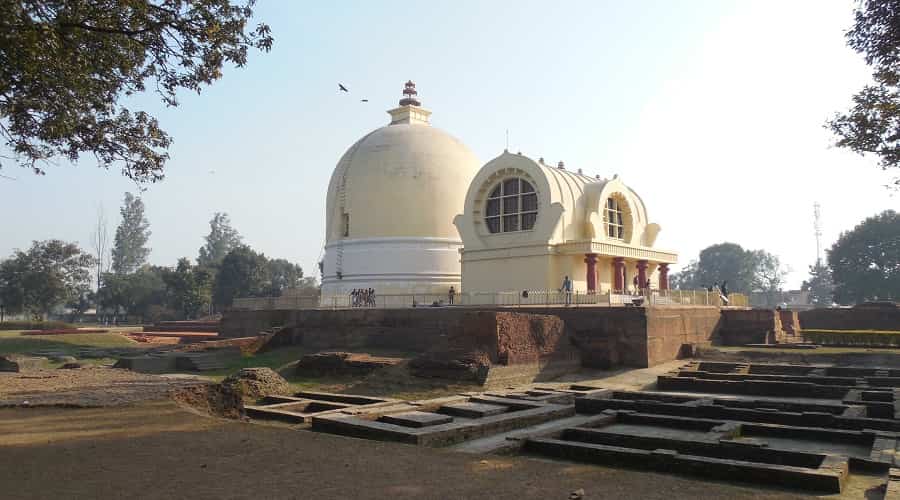
Kushinagar sits on the banks of the Hiranyavati River, in northern India. Here, the Buddha died and was cremated, or, as Buddhists prefer to see it, he went “beyond nirvana.” Ruins from monasteries encompassing eight centuries are scattered around the park. The center focus is on the one-room Mahaparinirvana Temple, with its 20-foot-long recumbent statue made of red sandstone, representing the dying Buddha.
Two brick terraces top the 49-foot Ramabhar Stupa, a circular drum were the Buddha was cremated.
Other Places worth Visiting
Mt. Kailash
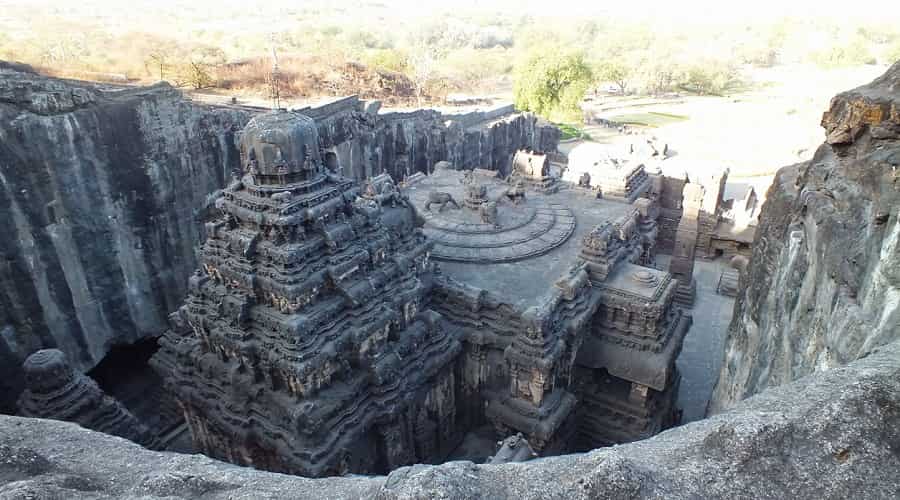
Situated in the Tibet, this place is sacred to Tantric Buddhists. Thousands of pilgrims come to circumambulate Mt. Kailash every year, making the strenuous 15-hour journey in one day, and facing altitude sickness, a harsh climate, and frozen terrain. Others crawl the entire perimeter of the mountain, kneeling and praying in the process.
Sri Dalada Maligawa
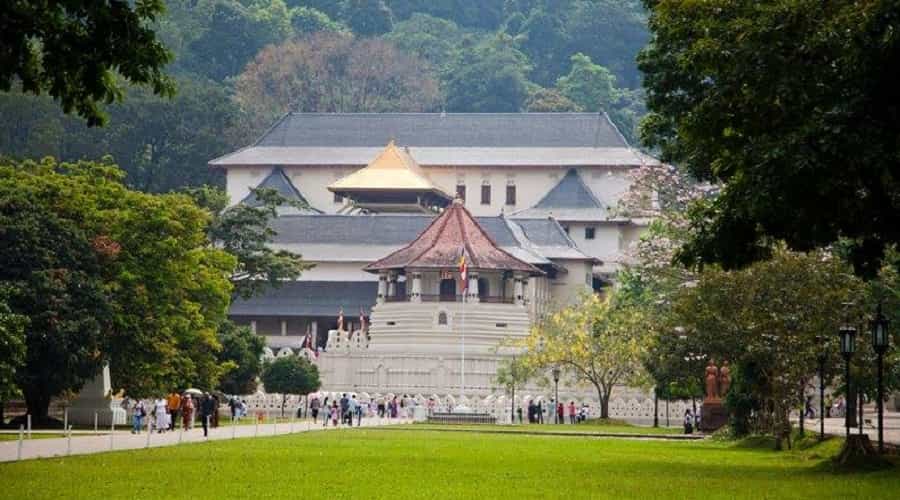
Also known as The Temple of the Sacred Tooth Relic, it houses the left canine tooth of the Buddha, one of the few remains after he was cremated at Kusinara. A ritual cleansing of the tooth is performed weekly by monks, who then distribute the “healing water” among those present.
Potala Palace
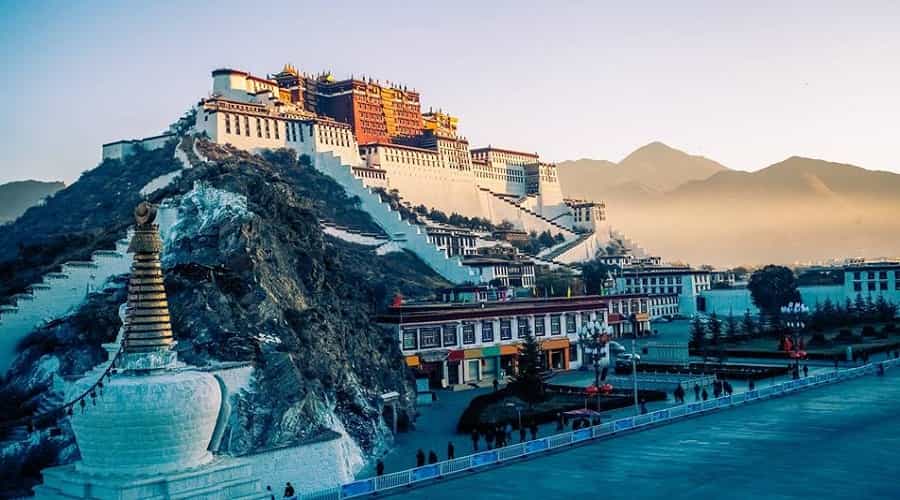
The fortress-looking palace sits on the Potala Hill (Tibet) and it was the official Dalai Lama residence until 1959. Although the building now houses a state museum of China, the chapels, shrines, and artifacts of former Dalai Lamas still remain intact inside its halls.
“You have other places that are regionally important,” says Ward. “Sites where famous monks lived, or where their relics rest are also pilgrimage destinations. Natural sites, such as certain mountains, caves, and rivers [and] human-made holy sites, especially where giant statues of the Buddha have been erected, as in Leshan China, where the largest Standing Buddha in the world has been carved [are also important].”
